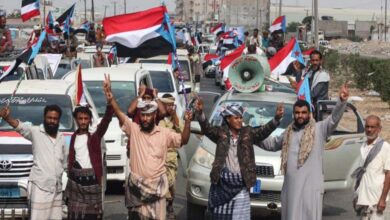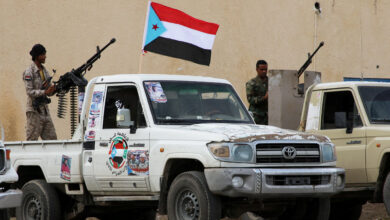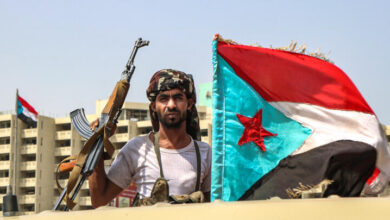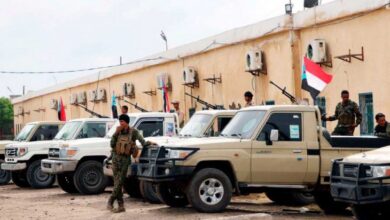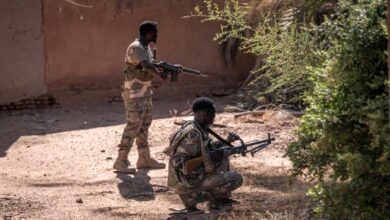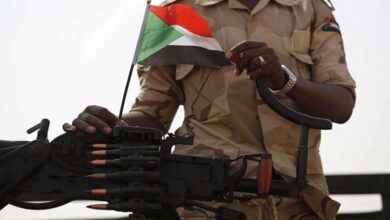Does Iran support Hamas?
Iranian funding for Hamas has not stopped, as Iran has once again become the "primary financial and military supporter" of the military wing of Hamas
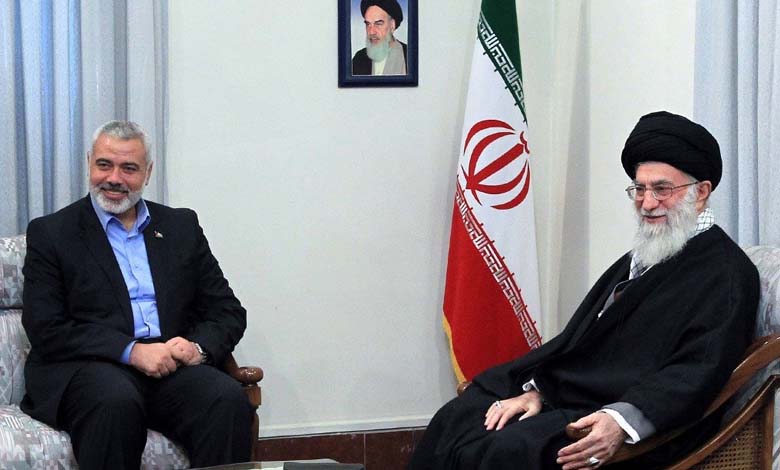
With details emerging about potential direct links between Hamas and Iran in carrying out the attack on Israel on October 7th, one thing is clear: Hamas could not have planned and executed such an operation without years of Iranian training, Iranian weapons, and hundreds of millions of dollars in Iranian funding.
In the weeks following the massacre committed by Hamas on October 7th, analysts debated whether Iran assisted Hamas in devising the terrorist attack and whether Iran was aware in advance of the attack.
In this context, the Wall Street Journal quoted a Hamas source as saying that Iran assisted in planning the attack and that the Iranian Islamic Revolutionary Guard Corps gave the green light for the attack during a meeting held in Beirut.
Another report by the newspaper alleges that hundreds of Hamas members and other Islamist militants received specialized training in Iran weeks before the attack. Iran has denied any involvement in the attack in any way, shape, or form, and U.S. intelligence indicates that the Hamas attack caught Iran off guard, undermining the theory that Iran played a direct role in planning or training activists for the conspiracy. In an early stage dating back to last August, Hamas Deputy Chief Saleh al-Arouri publicly stated, “We are preparing for a comprehensive war and discussing the possibilities of this war with all concerned parties.”
It is certain that such discussions included the Iranian Revolutionary Guard and Hezbollah, with whom Hamas leaders regularly met in a “joint war room” in Beirut. Ultimately, details of Iran’s role in the conspiracy will emerge.
But one thing has become fundamentally clear: Iran has been funding, arming, and training Hamas and providing it with intelligence for decades. While Hamas has multiple sources of income, Iranian funding has been particularly significant for the movement’s military and terrorist structures.
As U.S. National Security Advisor Jake Sullivan concluded when asked about Iran’s role in the Hamas attack, “We’ve said from the outset: Iran is complicit in this attack in the broad sense because it provided the lion’s share of funding for Hamas‘s military wing.
Iranian Venture Capital Funds for Startups
Since its formation in late 1987, Hamas has received and continues to receive significant financial support, as well as other forms of support, from Iran. In 1994, the Palestinian author turned legislator, Ziyad Abu Amr, wrote that Iran “provided logistical support to Hamas and military training to its members,” estimating Iranian assistance to Hamas “in the tens of millions of dollars.” Over time, this figure has steadily increased. According to a Canadian report, “Palestinian police discovered in February 1999, according to some reports, documents proving the transfer of $35 million to Hamas from the Iranian intelligence service, funds intended to finance terrorist activities against Israeli targets, according to some reports.” Iran has also trained Hamas activists to carry out attacks against Israel. For example, Hassan Salameh, one of Hamas‘s leaders and the mastermind behind a series of suicide bombings against buses carried out by the movement in February and March 1996, told Israeli police – which he later confirmed in an interview on CBS’s “60 Minutes” program – that after undergoing ideological indoctrination in Sudan, he was sent to Syria and then to Iran. At that time, Hamas‘s representative in Iran, Osama Hamdan, met with Salameh in Tehran, where Salameh subsequently underwent three months of military training conducted by Iranian instructors.
In May 2004, Israeli national security correspondent Ze’ev Schiff reported that Iran increased its funding for the Hamas movement at a time when U.S.-led coalition forces ousted Iraqi President Saddam Hussein, leading to the depletion of generous Iraqi grants provided to Palestinian families who were killed, injured, or imprisoned during their attacks on Israelis. Schiff wrote, “Intelligence information also indicates that Iran transferred millions of dollars to Palestinians through channels of Hezbollah.”
He added, “In fact, Iran is considered a substitute for the former Iraqi leader Saddam Hussein, who provided financial support to families of Palestinian suicide bombers or those injured in combat. In [Palestinian] territories, various Islamic charities manage the funds.”
Hamas accepted Iranian support for a period of time but sought to protect the independence of its operations. In its early years, Hamas hesitated to accept large sums of money from Iran for fear of becoming obligated to meet Tehran’s expectations and follow its instructions. However, Iran increased funding for the Hamas movement in May 2004 following the assassination of the movement’s leader, Abdel-Aziz al-Rantisi. Rantisi’s death, which came in the wake of the assassination of Hamas leader Sheikh Ahmed Yassin, left Hamas appearing weak and without clear leadership. In Damascus, some reports indicated that Hamas leader Khaled Mashal sought to secure more funding from Iran and establish a direct communication channel with the Iranian Islamic Revolutionary Guard Corps in an attempt to contain the impact of the assassinations of Yassin and Rantisi and revive Hamas’ operational cells.
Over time, Iranian support for the Hamas movement continued to grow, particularly after the movement seized control of the Gaza Strip by force and wrested power from its Palestinian counterparts in 2007. According to a 2010 U.S. Department of Defense report on Iranian military power, Iran provided “Hezbollah” and many Palestinian terrorist groups, including Hamas, with “funding, weapons, and training to confront Israel and undermine the peace process in the Middle East,” noting that such assistance was smuggled into Gaza at the time through tunnels under the “Philadelphia Corridor” (which runs along the border between Gaza and Egypt). The U.S. Department of State did not hesitate to clarify in 2012 that “Hamas” used smuggling tunnels from Egypt and maritime smuggling routes to import weapons from Iran to Gaza. The U.S. Department of State also noted that since 2007, the movement has been “devoting the majority of its activities in Gaza to enhancing its control, strengthening its defenses, building weapon caches, tightening security, and conducting limited operations against Israeli military forces.”
Despite the Syrian Civil War, Iranian funds continued to flow
Relations between Hamas and Iran became tense due to the decision by the movement to separate from the al-Assad regime because of the Syrian Civil War and the al-Assad regime’s targeting of Sunni “Muslim Brotherhood” affiliates. For many years, since the expulsion of Hamas leadership from Amman, Jordan, in 1999, Hamas maintained its external headquarters in Damascus. However, in January 2012, Hamas leader Khaled Mashal abandoned the movement’s base in Damascus. By February 2012, Hamas deputy leader Moussa Abu Marzouk, who was then in Egypt, remarked: “The Iranians are not pleased with our stance on Syria, and when they are not happy, they do not treat us in the same old way.” However, Iranian funding for Hamas did not completely stop. While the disagreement between the movement and Tehran affected the funding of Hamas‘ political activities, Iran continued to finance its military activities. Moreover, relations between Hamas and Iran began to normalize in early 2014. When Hamas engaged in a missile war with Israel in 2014 and demonstrated to Iran its ability to effectively target Israel, Iran took notice. According to the U.S. Congressional Research Service, “Since the conflict between Hamas and Israel in 2014, Iran appears to be seeking to rebuild its relationship with Hamas by providing missile technology used by the movement to build its own rockets and by helping it rebuild the tunnels destroyed in the conflict with Israel.”
These conclusions are supported by evidence that has become public in many prominent cases. For example, on March 5, 2014, the Israeli Navy intercepted the “Klos-C,” a commercial vessel flying the Panamanian flag, in the Red Sea off the Eritrean coast. According to the Israeli Foreign Ministry, Israeli naval forces boarded the ship, searched its cargo, and found a variety of weapons, including 40 ground-to-ground missiles of the “M-302” model manufactured in Syria, with a range of 90-200 kilometers, 181 122-millimeter mortar shells, and 400,000 rounds of ammunition for assault rifles.
In a sign of Iran’s renewed funding for Hamas, the US Treasury Department in September 2015 blacklisted a dual British and Jordanian national residing in Saudi Arabia who was coordinating the transfer of tens of millions of dollars from Iran to Saudi Arabia to finance the Hamas-affiliated Al-Qassam Brigades’ activities in Gaza.
Hamas activists in Lebanon assisted financial specialists in facilitating the flow of money from the Iranian Islamic Revolutionary Guard Corps to Hamas through the Lebanese Hezbollah between 2012 and 2016. It is essential to consider the case of Mohammad Sarur, based in Beirut, who is affiliated with both Hezbollah and Hamas. According to the US Treasury Department, “Mohammad Sarur served as an intermediary between the Islamic Revolutionary Guard Corps’ Quds Force and Hamas, working with Hezbollah elements to ensure the provision of funds to Hamas’ Al-Qassam Brigades [affiliated with the movement].”
By August 2017, Yahya Sinwar, who had recently been elected as Hamas leader in Gaza, stated that Iran had once again become the “first financial and military supporter” of Hamas‘ military wing.
Shortly thereafter, authorities noted a significant increase in Iranian efforts to fund the movement. For example, in November 2018, the US Treasury Department revealed a complex network operating on the principle of “oil for terror,” benefiting Hamas, among other groups. Its plan relied on shipping Iranian oil, with the assistance of Iranian clients and Russian companies, to the al-Assad regime in Syria, which would then transfer profits worth hundreds of millions of US dollars to the Islamic Revolutionary Guard Corps, which would in turn distribute the money to two of Iran’s top agents, Hezbollah and Hamas.
In June 2022, Hamas and Syria announced their decision to resume relations.
Iran’s continued support for Hamas
Today, US and Israeli officials estimate that Iran provides Hamas with no less than $70 to $100 million annually. Hamas leader Ismail Haniyeh claimed in an interview with Al Jazeera in 2022 that his movement receives $70 million annually from Iran.
Following Hamas‘ invasion of southern Israel in October 2023, the US Treasury Department blacklisted Mohammad Nasrallah, a veteran Hamas activist based in Qatar with close ties to Iran, for his involvement in transferring tens of millions of dollars to Hamas, including to the Al-Qassam Brigades.
Over time, Iranian funding for Hamas has supported the movement and built its terrorist capabilities. Iranian terrorist training programs and Iran’s ongoing efforts to arm Hamas over the years have enabled Hamas to carry out attacks targeting Israel, including the October 7 massacre.
For decades, Iran, designated by the United States as a state sponsor of terrorism, has continued to provide extensive financial support to Hamas. Without it, the organized terrorist movement Hamas is today would not have been possible. Jake Sullivan is right. “They provided training, and they provided capabilities.” Tehran has played a pivotal role in creating the monster called Hamas, and for this reason, Iran shares blame and responsibility for the heinous attack.


